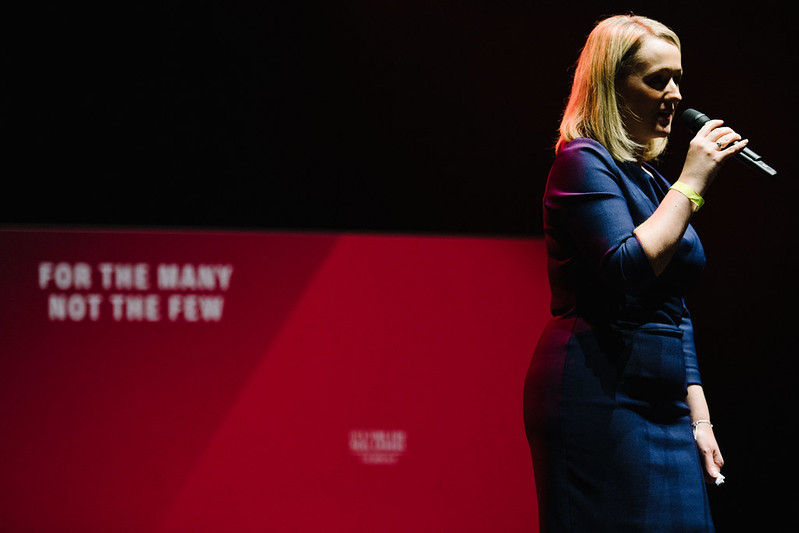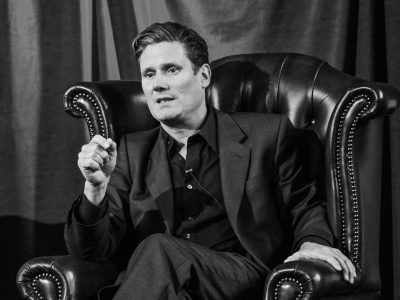WP_Post Object
(
[ID] => 1710
[post_author] => 2
[post_date] => 2020-04-24 02:31:36
[post_date_gmt] => 2020-04-24 02:31:36
[post_content] => Working from home under lockdown has highlighted some unanticipated gender and class issues.
I have a vivid memory of a 1990s television commercial for a then-state-of-the-art cordless phone. It portrayed an industrious young businesswoman working her way through the weekend from home. Her three young daughters appear and beg her to drive them to the beach. The woman is torn; she loves her kids, but she’s also a dedicated Career Woman, and, weekend or no, she has work to do.
The last shot of the ad shows the woman taking her daughters to the beach—and joining a conference call from her new cordless phone as they frolic in the waves. Technology, the ad suggested, would set a new generation of women free by allowing them to work from anywhere: with the right phone, you could spend time with your kids without sacrificing that promotion!
Fast forward to 2020 and a world reeling from a global pandemic. The ad now seems both dated and antithetical to modern concepts of gender roles and work-life balance (why can’t the children’s other parent take them to the beach? why is the person struggling to balance work and family always a woman? why should anyone have to join a conference call on a Saturday?). Now facing a grim choice between economic pain and physical risk are the huge number of people whose jobs cannot be performed from home—grocery store clerks, warehouse workers, transit workers, and health care providers, to name a few—as well as those whose employers are refusing to let them work from home, even in cases where their jobs can be done remotely.
Those who can work from home are the lucky minority. According to a survey conducted by the U.S. Bureau of Labor Statistics, 29 percent of wage and salary workers had the option of working from home in 2017-18, and 25 percent did so at least some of the time. Most of them are high-earning white collar workers. Of civilian workers, a category comprised of both private industry and state and local government workers, only 7 percent have access to “flexible” work, or telework.
The COVID-19 crisis has transformed a white-collar job perk into a necessary means of protecting the health of workers, businesses, and the overall economy. This is why, in the span of a few weeks, so many companies have gone from resisting to mandating it.
Organizations seeking to advance women in the workplace have been pushing for companies to allow flexible and/or at-home work since the 1970s. Women would benefit the most from these arrangements, the theory went, because they were expected to perform a greater share of domestic labor. Why should an ambitious, hardworking woman be held back in her career simply because she had to pick up the kids at 3pm or get dinner on the table by 7?
Today, women still do more child care and housework than men, but many fathers are playing a greater role in their children’s lives than did men of previous generations. Male and female, single and married, parents and child-free, many workers value the flexibility and freedom of working from home at least some of the time—being able to let in the plumber, sign for a package, go to the gym, walk the dog, or prepare a home-cooked meal reduces stress across the board.
Before the pandemic—and even now, in the midst of it—many organizations were and are reluctant to allow staff to work from home. Although more companies have been allowing at-home work in the last 20 years, the last decade saw a small backlash, led most notably by Marissa Mayer, who banned remote work when she took over Yahoo in 2013. Some employers worried that workers didn’t have the training or equipment necessary to work productively from home, or that being at home would be too distracting. Some managers feared a loss of control and didn’t trust employees to get work done. Mayer, Steve Jobs, and others believed that collaboration, connectedness, and innovation suffer when employees aren’t interacting with each other in person.
Now that working from home has, in some cases, gone from a reward reserved for upper management to a requirement of the job, more people are discovering its downsides. As a young entrepreneur named Adam Simmons told CBC News in 2019, "I think [working at home] is really damaging for your mental health…It definitely was for mine. I felt very, very lonely.”
When Simmons worked from home, he was alone. But due to pandemic-induced school and day care closures, many of today’s office workers are trying to meet the demands of full-time jobs while caring for children. An acquaintance recently described a meltdown her toddler son had while she was working from home. “He asked for a snack WHILE eating a snack,” she wrote in a Facebook post. “I said, ‘You’re already eating an apple,’ and he threw himself on the ground, moaning, ‘No, I need a snaaaaaaack!’” Never has the professor whose children famously interrupted a live BBC News interview in 2017 been more relatable.
Newer technologies like instant chat and video conferencing have made it easier than ever to work from home, if not necessarily more pleasant. Jeremy Bailenson, a professor of communication at Stanford and founding director of the university’s Virtual Human Interaction Lab, wrote about why so many people find Zoom meetings more exhausting than in-person ones in a recent Wall Street Journal op-ed.
Bailenson’s research suggests that employees now attending hours of Zoom meetings per week are experiencing “nonverbal overload.” The grid format of ten-person Zoom meetings, in which each participant stares at you from the screen for the entire time in an eerie echo of “The Brady Bunch,” can be “draining,” he wrote. In real-life meetings, we can “control our personal space,” whereas “for every minute we are in Zoom, we have staring faces inches from our own.”
Employers resist allowing people to work from home in part because they fear a dip in productivity. But research and workers’ experiences during the pandemic indicate that allowing (or requiring) work from home is in fact a boon to management. As Bailenson wrote in The Wall Street Journal, “people are forced to pay attention” on Zoom to a greater degree than in person. Even Kevin Roose, author of a recent New York Times op-ed entitled, “Sorry, but Working From Home is Overrated,” acknowledged that studies show remote workers are more efficient and productive and “tend to take shorter breaks and fewer sick days” than their on-site peers.
Advocates have emphasized for years that allowing employees to work from home at least some of the time can save companies money—e.g., by reducing office size or eliminating the need to rent one and slashing the cost of utilities, janitorial services, supplies, equipment, and furniture. According to a 2014 NBC News story, a typical business would save, on average, $11,000 per year by allowing employees to work from home just half of the time.
As Roose pointed out, having trouble separating work life from home life is a downside for workers, but not for bosses looking to “squeeze extra efficiency out of [their] employees.” Indeed, employees who now have to work from home because of the pandemic are encountering what one described in a recent career advice column as, “expectations that because we’re at home all the time anyway, we should be online and available at almost all times” and “being asked to do extra work during the evenings…because everyone knows we’re all here anyway.”
Without “the normal excuse of having plans,” the advice seeker wrote, “I'm finding it hard to say no.” Overwhelmed and/or abusive managers are already taking advantage of this situation; more than one person has noticed that they are working more hours now than they were before the pandemic, often because they’re replacing their daily commute with another hour or three of work.
Extra hours aside, working from home is not for everyone. Some—extroverts, parents of young children, people who value a clear separation between work and home—will be delighted to return to their offices as soon as it is safe to do so. Others, having discovered that they can work just as well (or better) from home, will not easily give up their newfound freedom.
For many companies, allowing people to work remotely at least some of the time makes sense for employers and employees alike, with or without a global pandemic. And it will be difficult for management to continue insisting it’s not feasible when workers have been doing it for months. Forcing adults to spend eight or more hours a day on-site is as outdated and ludicrous as running an ad that equates weekend work with women’s liberation.
[post_title] => What the pandemic is teaching us about working from home
[post_excerpt] => Now that working from home has, in some cases, gone from a privilege reserved for upper management to a requirement of the job, more people are discovering its downsides.
[post_status] => publish
[comment_status] => closed
[ping_status] => open
[post_password] =>
[post_name] => what-the-pandemic-is-teaching-us-about-working-from-home
[to_ping] =>
[pinged] =>
[post_modified] => 2024-08-28 21:08:26
[post_modified_gmt] => 2024-08-28 21:08:26
[post_content_filtered] =>
[post_parent] => 0
[guid] => http://conversationalist.org/?p=1710
[menu_order] => 272
[post_type] => post
[post_mime_type] =>
[comment_count] => 0
[filter] => raw
)



 Rebecca Long-Bailey at a Manchester Labour Party event on November 7. 2019.[/caption]
Rebecca Long-Bailey at a Manchester Labour Party event on November 7. 2019.[/caption] Lisa Nandy on September 23, 2018.[/caption]
Lisa Nandy on September 23, 2018.[/caption]







 Manderley Castle, Enya's mansion in Killiney.[/caption]
Manderley Castle, Enya's mansion in Killiney.[/caption]
